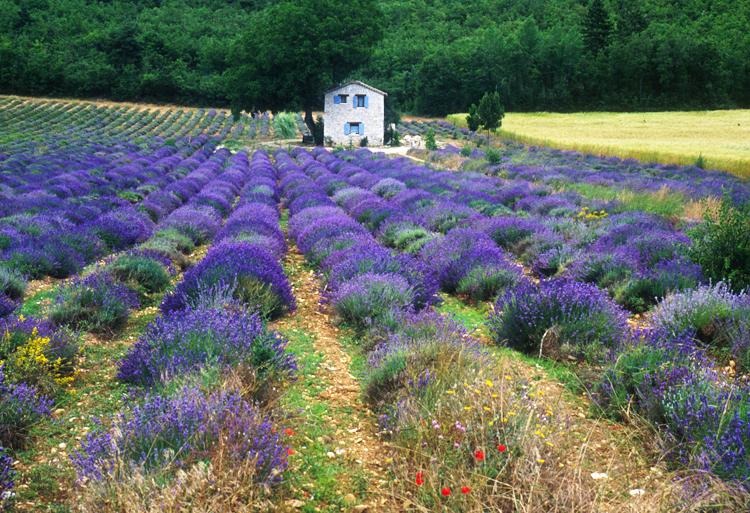How Oils from Indochina Became Global Staples
Celebrating our 30th Anniversary we begin to introduce a new range of products on our OSA website. We believe they represent a missing element in today’s aromatherapy: Essential oils which carry the message of the East, many of them at the center of various traditional healing systems, cultures or cuisines. Asia Aromatherapy attempts to integrate the missing Eastern element into aromatherapy. So far Aromatherapy has been a western cultural phenomenon driven by a hard to articulate, maybe subconscious disenchantment with the exclusive reductionist reasoning of western medicine.
Through aromatherapy, individuals, especially in urban centers, rediscovered an easy to grasp aspect of the plant world: Plant fragrance, plant perfume plant communication. Aromatherapy arose in Western urban regions because separation from nature had reached its most extreme levels in these environments.
The European origin of aromatherapy (Gattefossé, Valnet, Tisserand) is reflected in its most popular essential oils. The first essential oils of aromatherapy were those of culinary herbs from Europe such as Rosemary and Thyme, popular florals like Rose and Jasmine and also globalized denizens like Lemon and Orange.
However, exotic oils like Ginger and Clove also made it into the European essential oil cabinet and one has to ask why? Europeans, beginning with the Roman Empire, have a longstanding desire and for exotic spices. Since the first millennium BCE, this desire was satisfied by adventurous Arab maritime traders. This only changed when in the 16th century the colonial and economic aspirations of the Dutch and British made Pepper and Clove a household name.
The numerous oils we use in aromatherapy that originate from the former Indochina (“Indochine”), North Africa and Madagascar have become aromatic common places because of the French colonial involvement in these regions (i.e. Cajeput, Niaouli, North African Rosemary etc) in the 18th and 19th century.By now quite a number of essential oils from the East are well integrated into aromatherapy. Nonetheless their historic and cultural aspects have been all but ignored in the aromatherapy literature. Almost all books somehow homogenize essential oils by adopting the Roman alphabet as the organizing principle beginning with Anise Seed and ending with Ylang Ylang. Niaouli is just another essential oil listed after Juniper, and before Mandarin.
In Asia Aromatherapy we explore the oils from the East in the cultural context of the plants and their origin. Even a quick glance at this subject intimates that there is much to learn that can broaden our capacity to heal with essential oils and other extracts from aromatic plants. The complex web of anti-inflammative and anti-tumor properties molecular biology discovers in Asian rhizomes and resins encourages a new look at the wisdom of traditional systems such as Ayurveda or TCM. As extracts from these plants are found to lower cholesterol or to prevent arthritis, one might ask whether our ancestors had information about these plants that has escaped reductionist pharmacology. So, besides introducing oils like Galangel, Turmeric and Guggul, Asia Aromatherapy also revisits oriental, holistic treatment strategies to which these oils hark back.
Taking cues from the history of the spice trade and the many cultural and religious movements of the Asian continent some general areas of interest are easy to discern.
Sacred Fragrance: Intuitively Lotus carries many notions of spirituality and purity. Osmanthus absolute directs the seeker’s attention to China’s South, especially Guangxi province with its unique landscapes. Sandalwood has been a global favorite as a warm and tenacious base for amateur and professional perfume creations. And for all who desire to go on truly exotic or new fragrance explorations the depth and diversity of a few different samples of Agarwood essential oils will prove a spectacular diversion.
The Malabar Coast, spices everywhere:
India’s Malabar is home to the Black Pepper vines that have become the globe’s most common spice. Besides Black Pepper India and Sri Lanka are home to many typical “spices,” many of which not only have exquisite culinary value, but also the most astounding healing properties. Cinnamomum ceylanicum is even named after the island of its origin. It still evokes associations of exotic spice but also has become a staple in cuisines the world over. Its healing properties for infections and modern day metabolic diseases are spectacular.
The Spice Islands and Rhizomes and Resins:
Nutmeg and Clove were among the foremost commodities that Columbus was looking for when he first set out to find a more direct route to East India. Today the riches of the Indonesian Archipelago’s aromatic plants are known around the world. Most famous – and also unique – is maybe Patchouli with its mostly overlooked, yet superb healing qualities.
The Early Spice Trade:
Adventurous Arab traders sailed the oceans between China and the Roman Empire beginning probably 3000 years ago. Understanding the routes, the cultures and the products of the early trade can tell us much about what drove human desire thousands of years ago. It seems reasonable to speculate that Frankincense and Myrrh have acquired their mythical status because humans throughout history knew about their wide ranging healing properties, at least intuitively.
We will start our explorations with nine different CO2 extracts and a Blue Lotus and an Osmanthus absolute. Some of the oils we already have in the regular essential oil category we will list again in the Asia Aromatherapy column, when we are especially proud of their authentic Asian pedigree.
